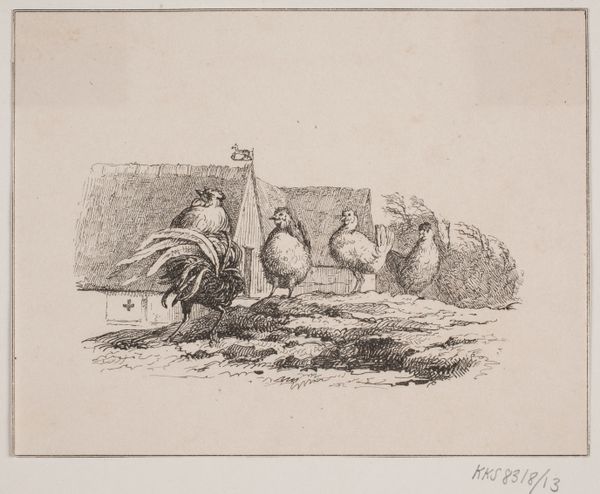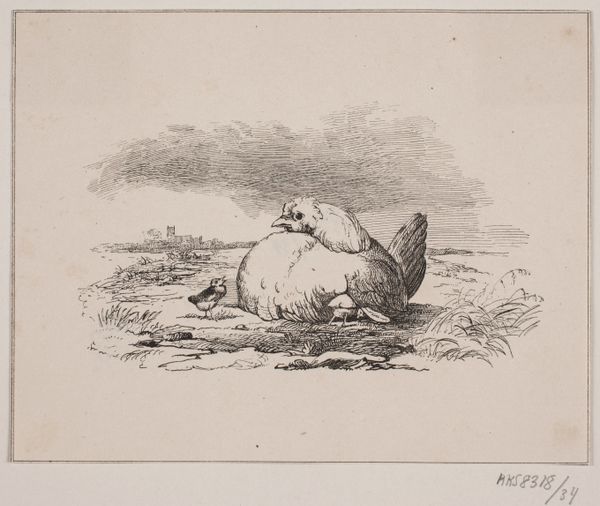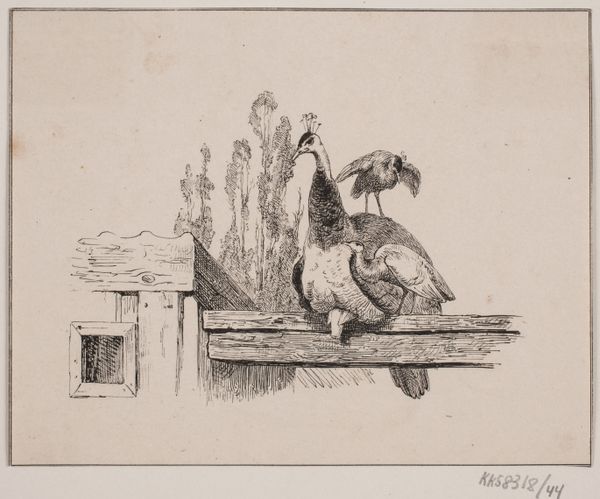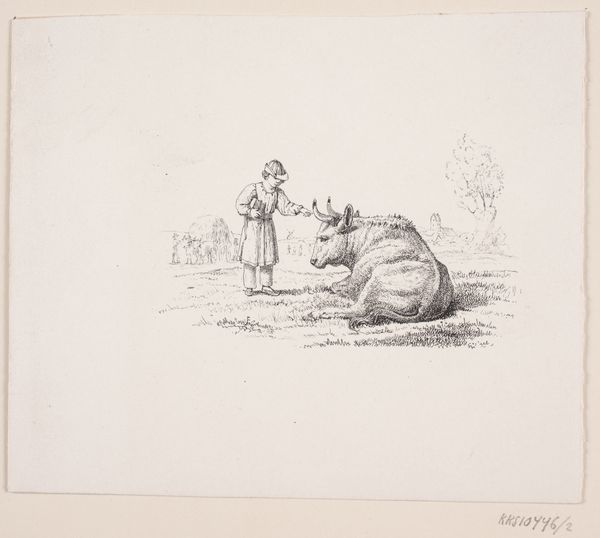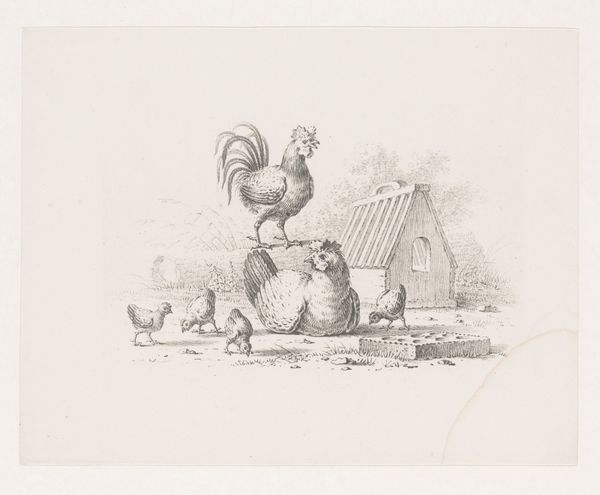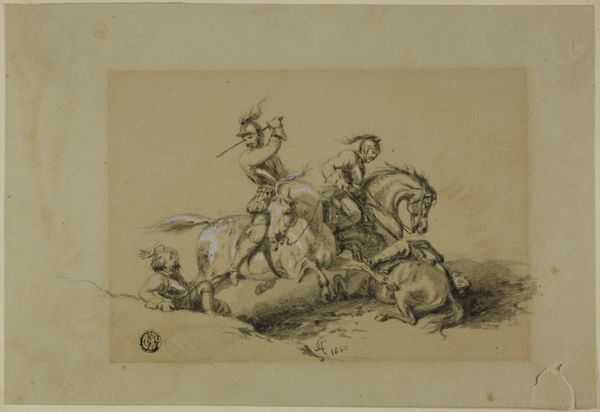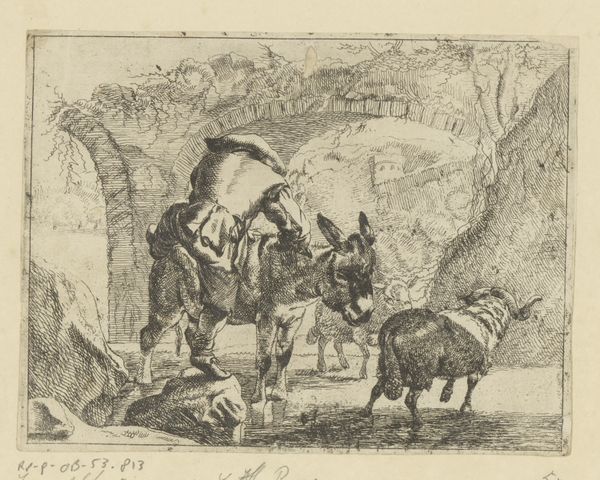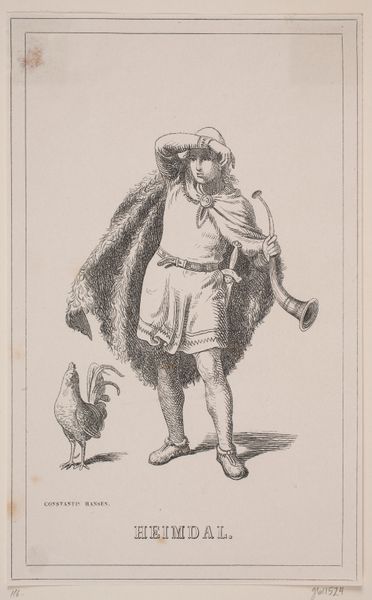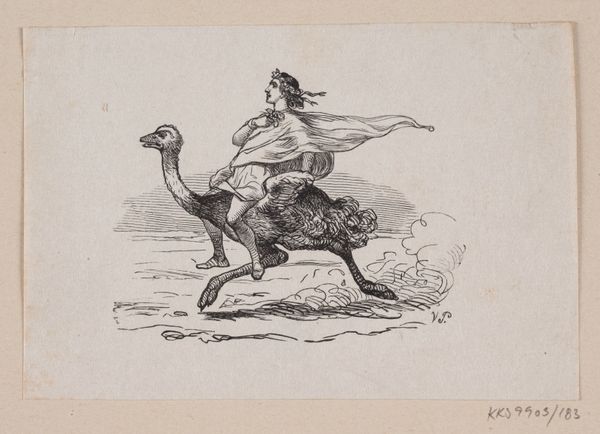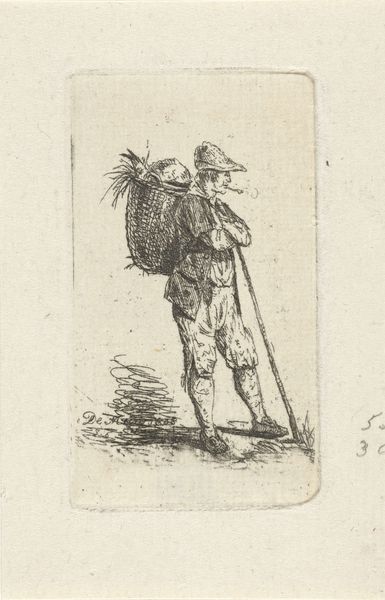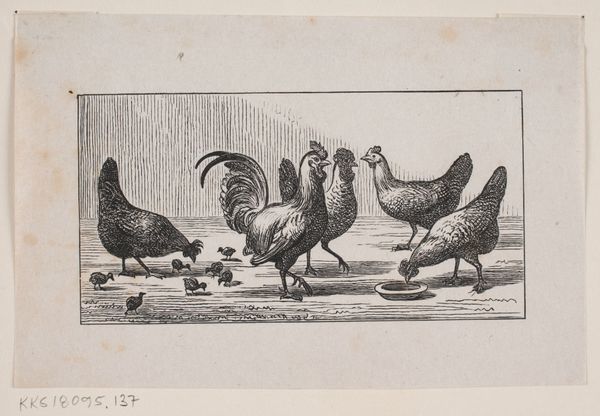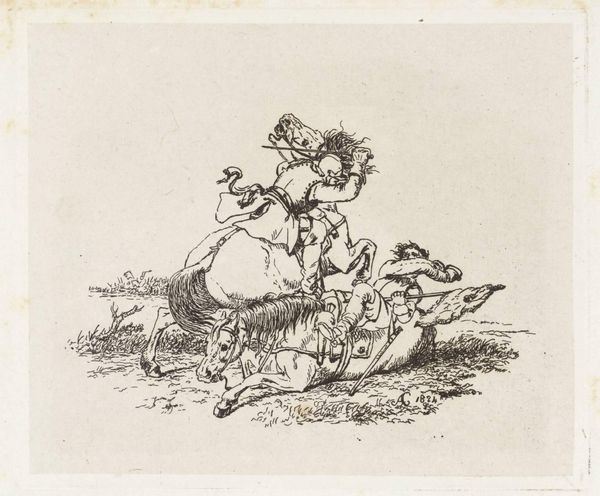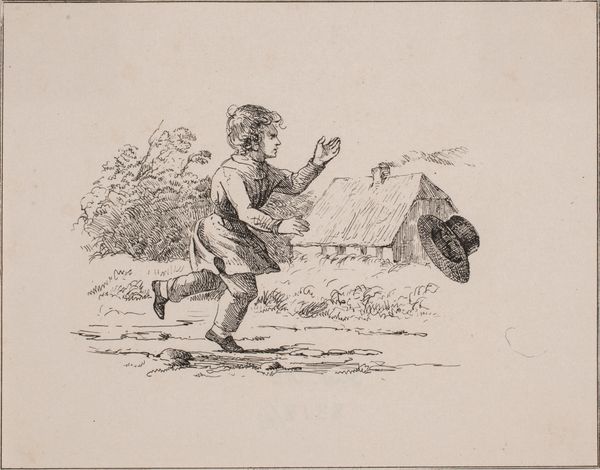
drawing, lithograph, print
#
drawing
#
lithograph
# print
#
landscape
#
genre-painting
#
realism
Dimensions: 97 mm (height) x 126 mm (width) (bladmaal)
Curator: Here we have Adolph Kittendorff's 1845 lithograph, "Hanekyllingerne," housed here at the SMK, Denmark's National Gallery. Editor: My initial feeling is one of whimsical simplicity, it's quite an unassuming lithograph; the hatching gives a great deal of texture, although, quite muted in tone. There’s an open rurality. Curator: Yes, observe the subtle but insistent texture that is crafted purely through line work—consider how the hatching varies to suggest not just light and shadow but also the different surfaces from the thatched roof to the birds’ feathers. We can appreciate the mastery of this kind of rendering in the landscape tradition. Editor: Right, but what story is this composition conveying about class and labor? Notice the rural landscape beyond the thatched house. The chicken acts as a kind of motif for country folk—a theme repeated in 19th century visual culture. It may imply a gentle mockery towards this class and perhaps a signal toward a rapidly modernizing society? Curator: While social implications may indeed be read into this, look at the careful arrangement of the figures; the way the rooster on the roof echoes the hen below creates a structured visual dialogue. I would ask what this kind of symbolic mirroring does to underscore particular relationships or narrative qualities already inherent in this family structure. Editor: This work provides an invaluable lens to observe not only 19th century ideas about family, but also how labor, land, and class are intertwined with gender roles through agricultural themes. Think about the hens representing feminine nurturing, yet also female labor! Curator: But perhaps a crucial piece here is the formalism that Kittendorff explores; notice the intricate detailing versus negative space: a balance, I'd say, that gives the image a great dynamism that transcends genre concerns. Editor: Ultimately, this work opens a portal, not just to observe the art historical landscape in Europe at that time, but it encourages an intersectional discussion that may allow the viewer to become conscious about contemporary inequities. Curator: Indeed, appreciating Kittendorff's use of detail against the expansive space grants insight into the complex play of artistic methods, while prompting questions around representation and perception that persist today.
Comments
No comments
Be the first to comment and join the conversation on the ultimate creative platform.
